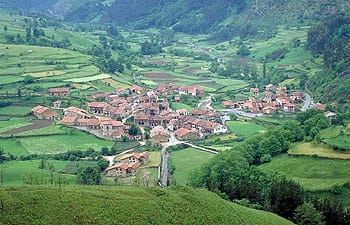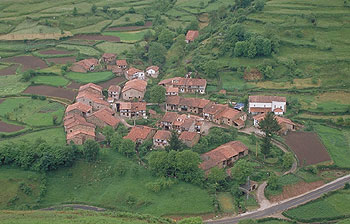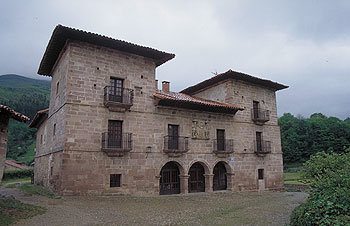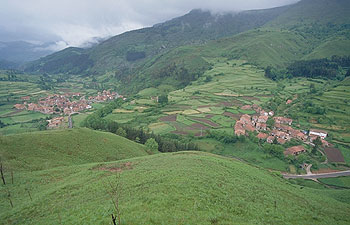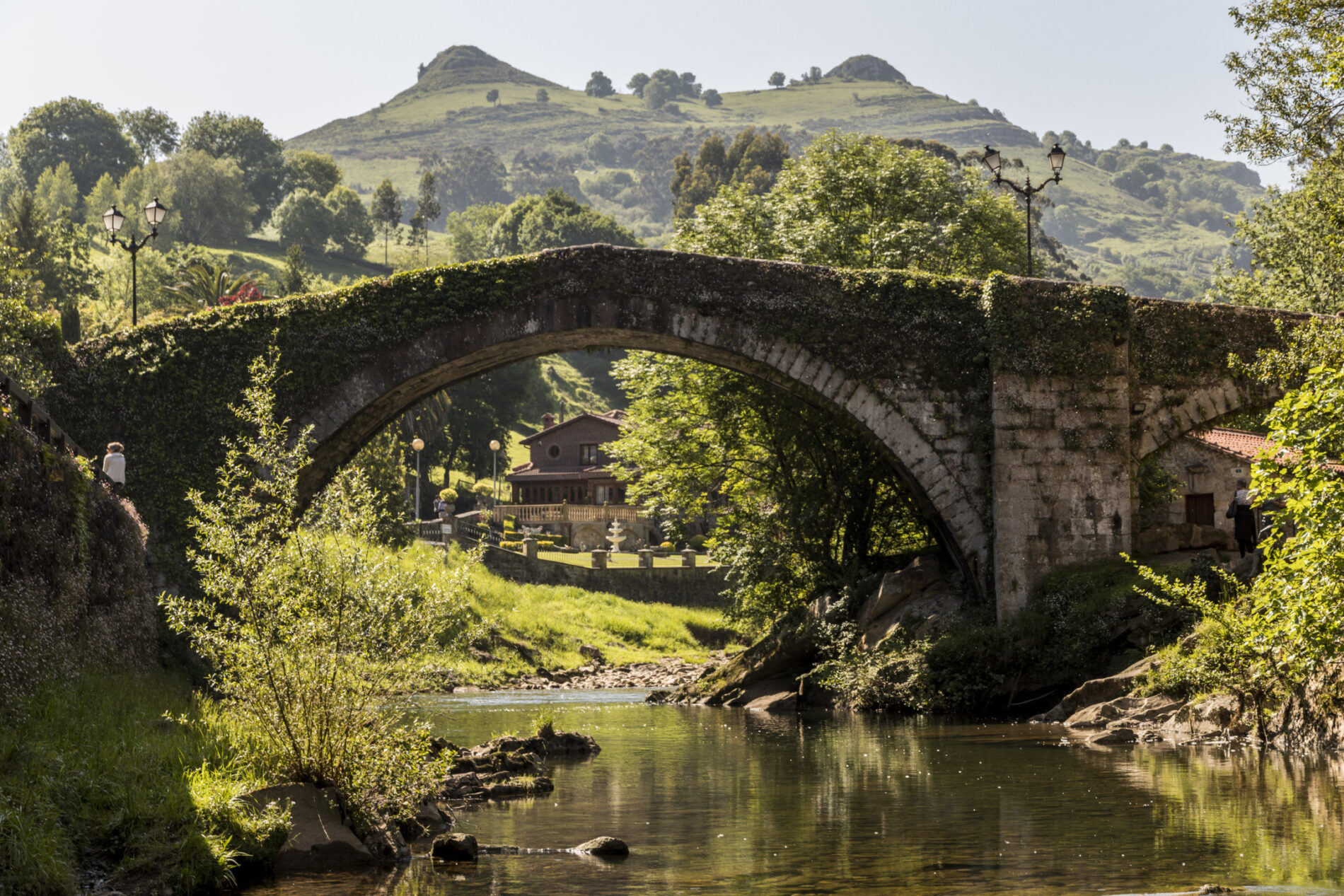Carmona
Site of Cultural Interest: 1985
Approach
By the road linking the Saja and Nansa valleys via the Carmona Pass.
Period
16th-18th centuries
Descripción
A village situated in the middle valley of the Nansa River, it preserves its old urban layout, characterized by a concentrated structure with a large number of traditional rural houses typical of the area. These houses generally have two floors and a main facade facing south, featuring arcades on the ground floor and a balcony between corbels, dating from the 17th and 18th centuries, although some 16th-century houses are also preserved. The most emblematic building is the Palace of the Díaz Cossío y Mier family, currently a tourist accommodation managed by the Cantur company.
It was built at the beginning of the 18th century and completed in 1715, commissioned by D. Francisco Díaz de Cossío. It has an imposing facade formed by a central body flanked by two square towers. In the central body, there are three segmental arches providing access to the entrance hall on the ground floor, and two balconies with railings on the second floor, between which there is a large coat of arms between figures. The towers have three floors with projecting iron balconies and railings. The parish church is dedicated to San Roque (Saint Roch) and was built in the 18th century. The chapels of Nuestra Señora de Guadalupe (Our Lady of Guadalupe) and Lindes also date from the 18th century. The regionalist writer Manuel Llano lived in Carmona.
Features
Rural village with a large number of traditional houses and some manor houses.



